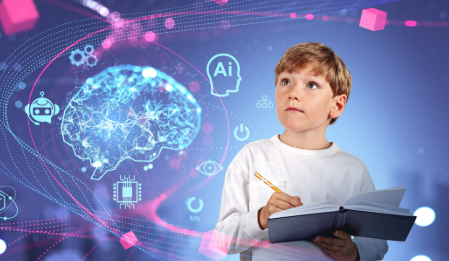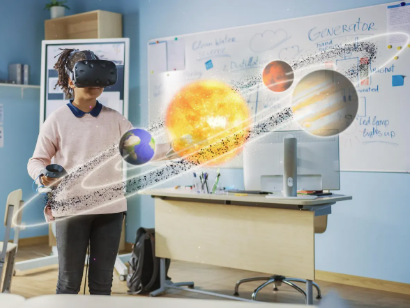Artificial Intelligence (AI) is becoming a powerful force in education, reshaping how students learn, how teachers teach, and how institutions operate. By enabling personalized learning, enhancing administrative efficiency, and supporting innovative teaching tools, AI is helping to make education more effective, inclusive, and accessible. Here’s a closer look at how AI is transforming education across different levels and environments:
- Personalized Learning Paths
AI algorithms can assess students’ strengths, weaknesses, and learning styles to provide individualized lesson plans. Adaptive platforms recommend exercises, adjust difficulty levels, and deliver targeted feedback, helping each learner progress at their own pace. - Smart Content Creation
AI is being used to generate interactive learning materials such as quizzes, flashcards, and study summaries. Tools can also convert textbooks into smart formats that include multimedia explanations and real-time updates. - AI-Powered Tutoring and Support
Virtual assistants and chatbots can answer common student questions, provide instant homework help, and offer guidance on assignments. This 24/7 support extends learning opportunities beyond the classroom and reduces delays in getting help. - Automated Grading and Feedback
AI tools can automate grading for multiple-choice and short-answer questions, saving educators time and ensuring consistency. Advanced systems are also beginning to assess written work, providing feedback on grammar, structure, and clarity. - Early Warning Systems for At-Risk Students
Machine learning models can analyze attendance, participation, and performance data to identify students who may need additional support. Educators can then intervene early, providing resources or personalized plans to help them succeed. - Language Learning and Translation
AI-driven tools support real-time translation, pronunciation feedback, and language practice, making it easier for learners to study new languages or access content in non-native languages. - Voice Assistants in the Classroom
Voice-activated AI tools can help teachers manage schedules, pull up resources quickly, or perform simple tasks like setting timers. These hands-free helpers streamline classroom routines and reduce time spent on administrative work. - Streamlined Administrative Tasks
AI is also used behind the scenes in admissions, scheduling, and student services. Chatbots can handle inquiries, AI scheduling tools can organize resources more efficiently, and predictive analytics can guide institutional planning. - Enhanced Accessibility
AI supports learners with disabilities by offering text-to-speech, speech-to-text, image recognition, and other adaptive technologies that personalize the learning experience and remove barriers. - Continuous Professional Development for Teachers
AI-powered platforms can recommend professional learning modules, track progress, and suggest teaching resources tailored to educator needs. This helps teachers stay updated with new methods and tools.
In summary, artificial intelligence is reshaping the future of education by making it more personalized, efficient, and inclusive. While it won’t replace teachers, AI serves as a powerful partner, enabling educators to focus more on mentoring and less on manual tasks. As these technologies continue to evolve, the potential for AI to enhance learning outcomes and educational equity will only grow stronger.














